Creative Edge Master Shop
When Water and Stone Collide, Art is Born
Joel Davis
Special Contributor
Photos Courtesy Creative Edge Master Shop
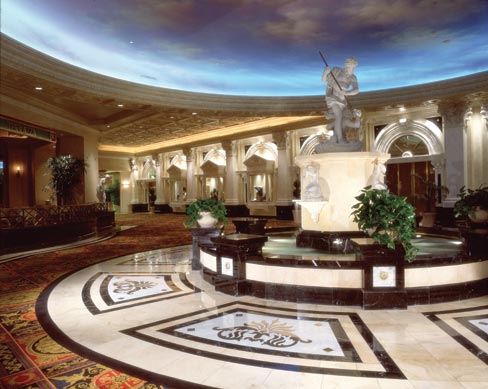 For 25 years, Fairfield, Iowa-based Creative Edge Master Shop has championed the use of waterjet cutting technology to produce fine, intricate work in stone and countless other materials.
For 25 years, Fairfield, Iowa-based Creative Edge Master Shop has championed the use of waterjet cutting technology to produce fine, intricate work in stone and countless other materials.
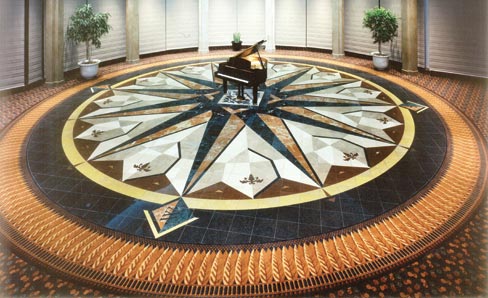 It is a journey that began with faith and confidence in the potential of a new industrial technology.
It is a journey that began with faith and confidence in the potential of a new industrial technology.
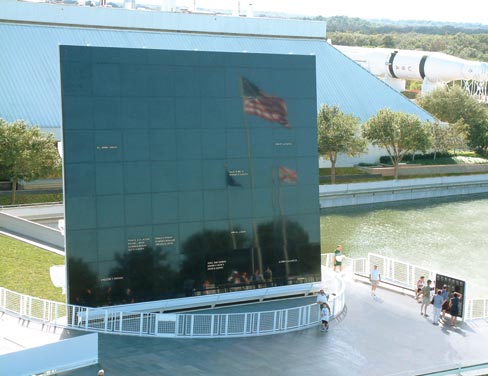 “We are not the inventors of the waterjet, but we were among the very first to apply it to stone and other architectural materials,” President Jim Belilove said.
“We are not the inventors of the waterjet, but we were among the very first to apply it to stone and other architectural materials,” President Jim Belilove said.
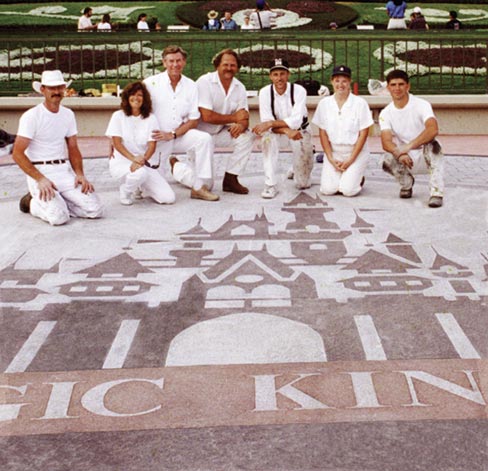 Creative Edge’s main business is producing decorative work for floors, but it also ventures into walls, murals, and special projects.
Creative Edge’s main business is producing decorative work for floors, but it also ventures into walls, murals, and special projects.
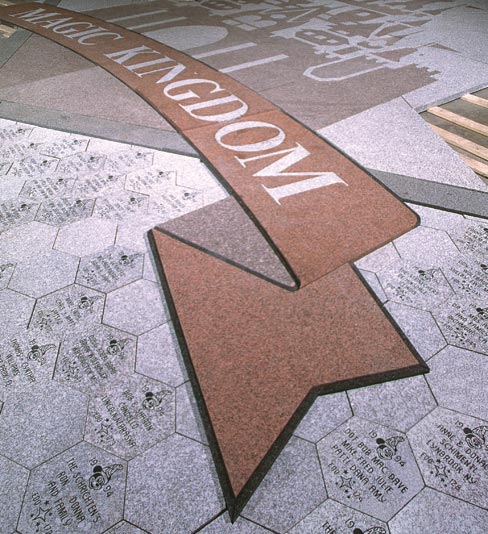 Materials can range from 8-inch vinyl up to 3-inch granite. Waterjet technology can even cut and shape linoleum and carpeting.
Materials can range from 8-inch vinyl up to 3-inch granite. Waterjet technology can even cut and shape linoleum and carpeting.
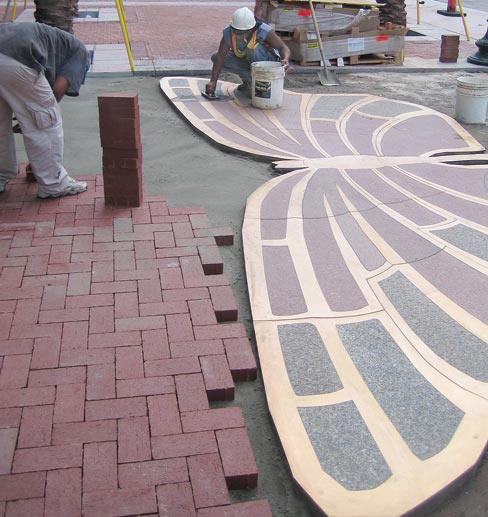 In the early days, faith in the technology gave Creative Edge the audacity to push its limits and continue to expand the know-how of its artisans.
In the early days, faith in the technology gave Creative Edge the audacity to push its limits and continue to expand the know-how of its artisans.
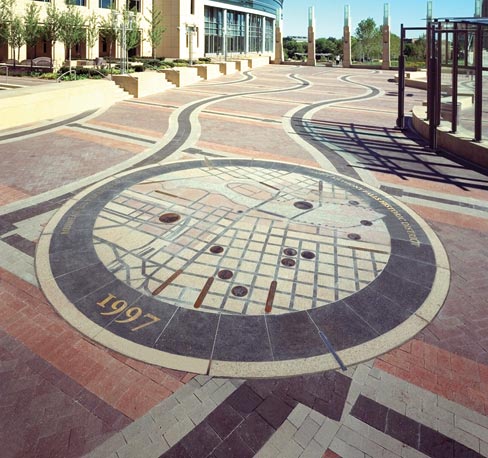 “We would take on whatever challenging project we could,” Belilove said.
“We would take on whatever challenging project we could,” Belilove said.
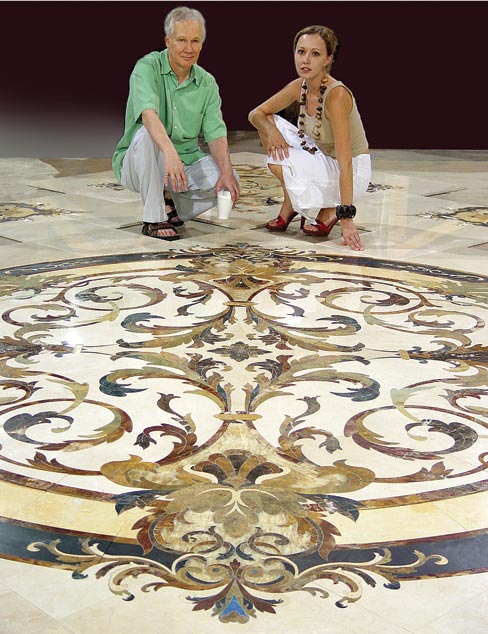 “We were never known to say no.We probably should have in some cases, but that’s the way entrepreneurs are.”
“We were never known to say no.We probably should have in some cases, but that’s the way entrepreneurs are.”
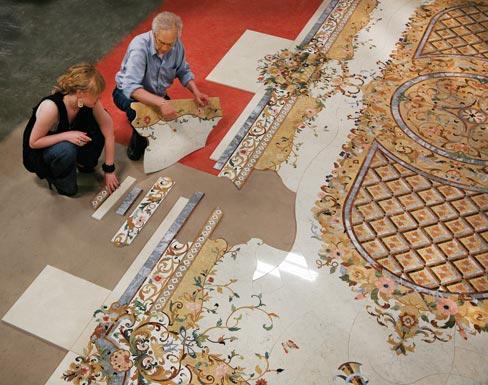 The Creative Edge fabrication shop contains an arsenal of 14 Flow International waterjets.
The Creative Edge fabrication shop contains an arsenal of 14 Flow International waterjets.
“This is industrial equipment capable of cutting heavy stone into just about any shape and also things like glass and ceramics ... and all other kinds of floor covering,” Belilove said.
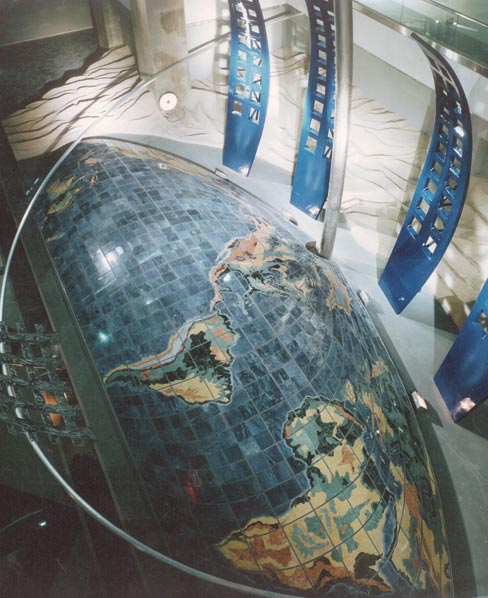 The company’s computer-controlled waterjet cutting process uses a high-pressure stream of water mixed with garnet sand to precisely cut a wide spectrum of materials.
The company’s computer-controlled waterjet cutting process uses a high-pressure stream of water mixed with garnet sand to precisely cut a wide spectrum of materials.
“So many aspects of this technology were revolutionary,” Belilove said. “It cut metal without heat so you didn’t have warping. Architectural metals were a possibility because there was no oxidation or burning. You could make shapes in stone that you had no other way of making.”
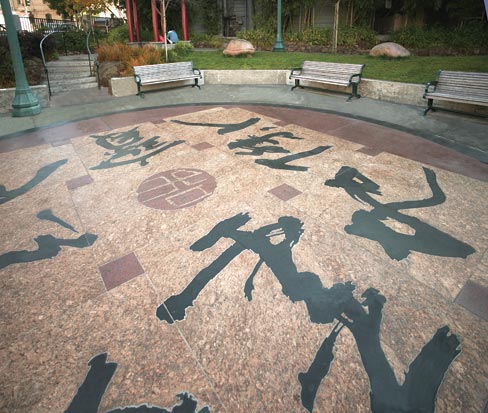 During the last two-and-a-half decades, Creative Edge has continued to amass the institutional knowledge and experience to provide benefits that its competitors can’t match.
During the last two-and-a-half decades, Creative Edge has continued to amass the institutional knowledge and experience to provide benefits that its competitors can’t match.
“We’ve probably got the broadest range of services,” Belilove said. “We do original and artistic design. We do all the detailed architecturals. We’re good at sourcing stone. We know where all the stone colors are.
“We do big projects so we’re experienced at making it so a tile contractor can have everything together. Our installation systems are thorough. We work in all the materials and all the combinations of materials. We can put metal and glass in stones. We can offer rough and soft finishes and all sorts of nuances of design. We’ve got a lot of capacity.”
Waterjets can be used to cut materials ranging from solid metals to resilient flooring. It is an affordable, alternative cutting method for stone that allows complex shapes and intricate designs that would not otherwise be possible to produce.
All cuts are computer-controlled, allowing for the perfect fitting of disparate materials together with almost seamless joints.
Creative Edge Master Shop is the largest shop of its kind in the industry. It has a 125,000 square foot production facility that produces 50-to-100 projects every month. It employs about 45 people in its design and fabrication groups, Belilove said.
“We’re the largest, we’re the most experienced, and we’re the most creative because we have creative artists who really understand the technology and what works and doesn’t work.”
Serving architects, interior designers, landscape architects, contractors, developers, project managers, and residential owners around the globe, Creative Edge offers complete design and project management capabilities from conceptual design through installation.
“At this point, we’ve done more than 10,000 projects,” Belilove said.
“One of the real landmarks along the way was the Astronaut Memorial at Cape Kennedy. It was a beautiful project. Another landmark was the big entryway to Disney World in Florida. It came out very, very nicely.”
The Astronaut Memorial, a 42-1/2-foot-high-by-50-foot-wide black granite surface, honors the 24 U.S. astronauts who have given their lives for space exploration.
It lists the names of the fallen astronauts from the Space Shuttle Columbia, the Space Shuttle Challenger, and Apollo 1. It also honors astronauts killed during training and commercial airplane accidents.
The company has left its mark around the country and world with ambitious architectural projects including O’Hare International Airport, Monsanto Headquarters, World of Coca-Cola in Las Vegas, the Hubert H. Humphrey Metrodome in Minneapolis, the Meadowlands Sports Complex, Cosmopolitan Las Vegas, and the Federal Reserve Bank in Minnesota.
On a smaller scale, Creative Edge has contributed signature projects to high-end residences, shopping centers, airports, hotels, casinos, and convention centers throughout the nation.
Creative Edge is not afraid to continue pushing the envelope as it explores new uses for waterjet technology. Recently, the company developed fabricating forms and patterns for use in the terrazzo tile industry, Belilove said.
“It keeps going. I am continually amazed at what we do even though I’ve done so much of this. I’m always excited when we’ve developed some new ideas and projects.”
Back in 1988, during what he called the dawn of waterjet cutting technology, Belilove joined his partner, Harri Aalto, in making a bet on the utility of waterjets for fine design work.
The duo felt that the technology, originally used in diverse industrial settings, would offer significant competitive advantages over traditional methods.
“It had been used for cutting food: frozen pizza, olives, and green beans,” Belilove said. “It was used for cutting diapers. It was good with laminates, composites, and metals. It occurred to us that this could be a great thing for architectural finish material. That was pretty much the whole, entire business plan.”
Belilove is a graduate of the Harvard Business School with decades of experience in business strategy, machine technology, sales, marketing, and factory operations.
Harri Aalto, co-founder of the company, had been introduced to waterjet cutting technology while running a design studio in Switzerland during the 1980s and quickly realized its nearly unlimited potential for intricate, artistic designs.
“My partner, Harri Aalto, is an honest-to-goodness fine artist,” Belilove said. “He’s a sculptor and painter and has a lot of practical sides, too. His history has been as a fine and commercial artist.
“My history has been as an entrepreneur more on the side of machinery and technology. I have learned a whole heck of a lot about stone and every kind of floor covering over 25 years. I did not start out in the stone business.”
Aalto, born in Finland, is a graduate of the Ontario College of Art in Toronto. At points during his long career, he executed fine and public artwork commissions around the world.
Originally, the Creative Edge business plan was based on the hope that architects, seeing samples of the finished product, would be so impressed that they would convert to use of waterjet technology on the spot.
The flaw in the plan, Belilove said, was that architects could not believe their eyes upon seeing the intricate details and new material combinations.
“The most common thing they said was ‘Is this real? How did you put that decal on this?’ It was kind of not believable at first, and it was many years before this became an accepted technique.”
During the past 25 years, waterjet technology has continued to improve and evolve, Belilove said.
“The main ways that the technology has changed is it has become more reliable. In the early days, it was hard to get a machine to run two hours at a time. Now it’s much better. You get 100 hours out of a cutting nozzle. That certainly makes it very practical.”
In the past, high water pressure could wear out waterjet components, particularly the cutting head, quickly. “Now it’s quite stable,” he said.
Advancing technology has also led to the capability of producing finer and tighter joints —shrinking the gaps from one-eighth inch in the old days down to a 32nd of an inch or even less. “We try for non-existent joints,” Belilove said.
The history of Creative Edge offers lessons to entrepreneurs who seek to embrace new technology in existing industries.
Developing a market based on the cutting edge requires patience, Belilove said.
“Most of the time the developer thinks it’s obvious why it is so important and what you can do with technology, but it takes quite a long time for the news to get around and (for customers) to have confidence. That’s certainly been our experience.”